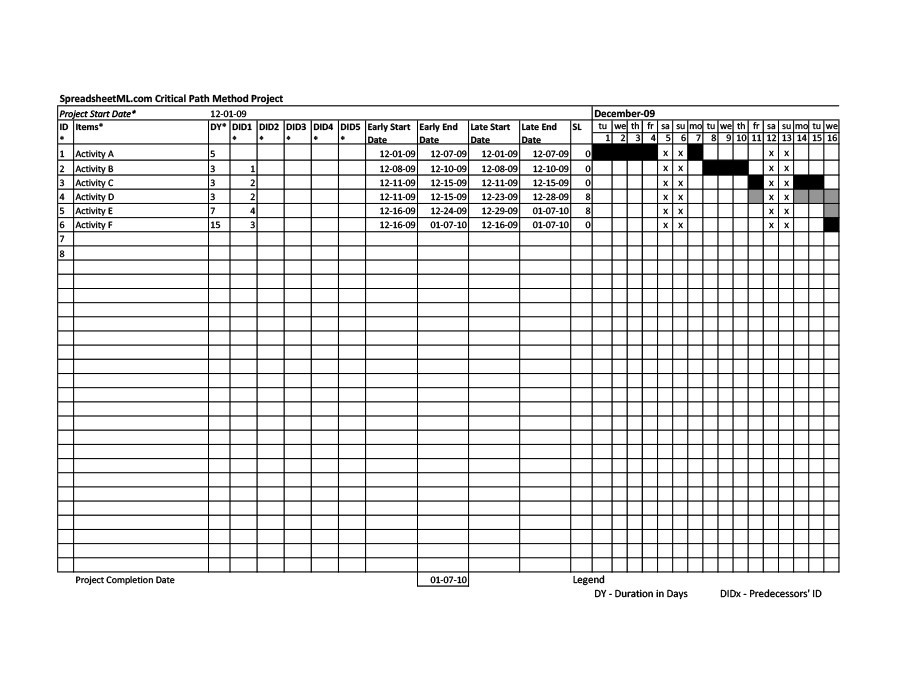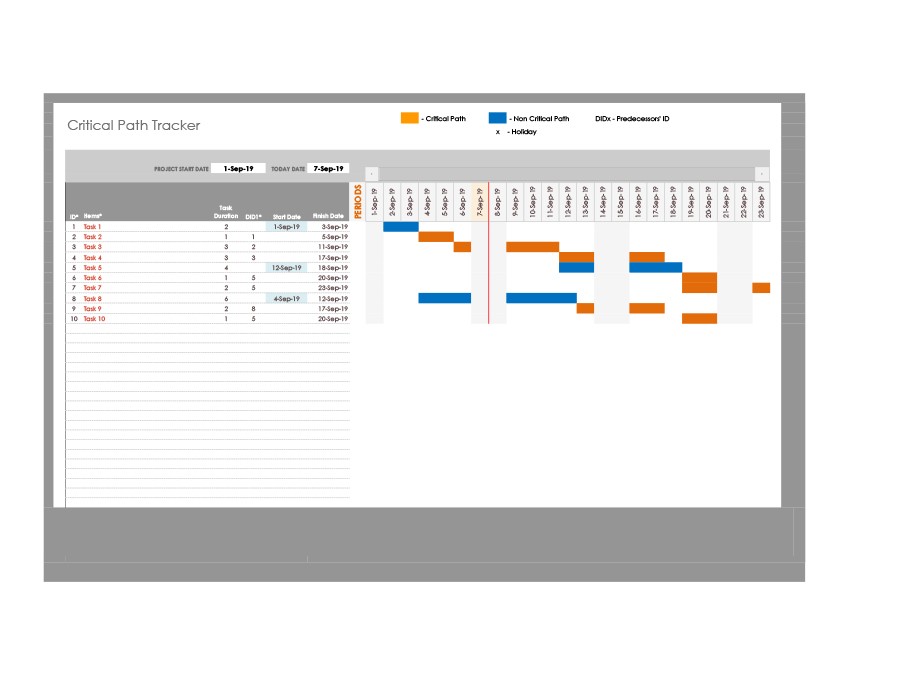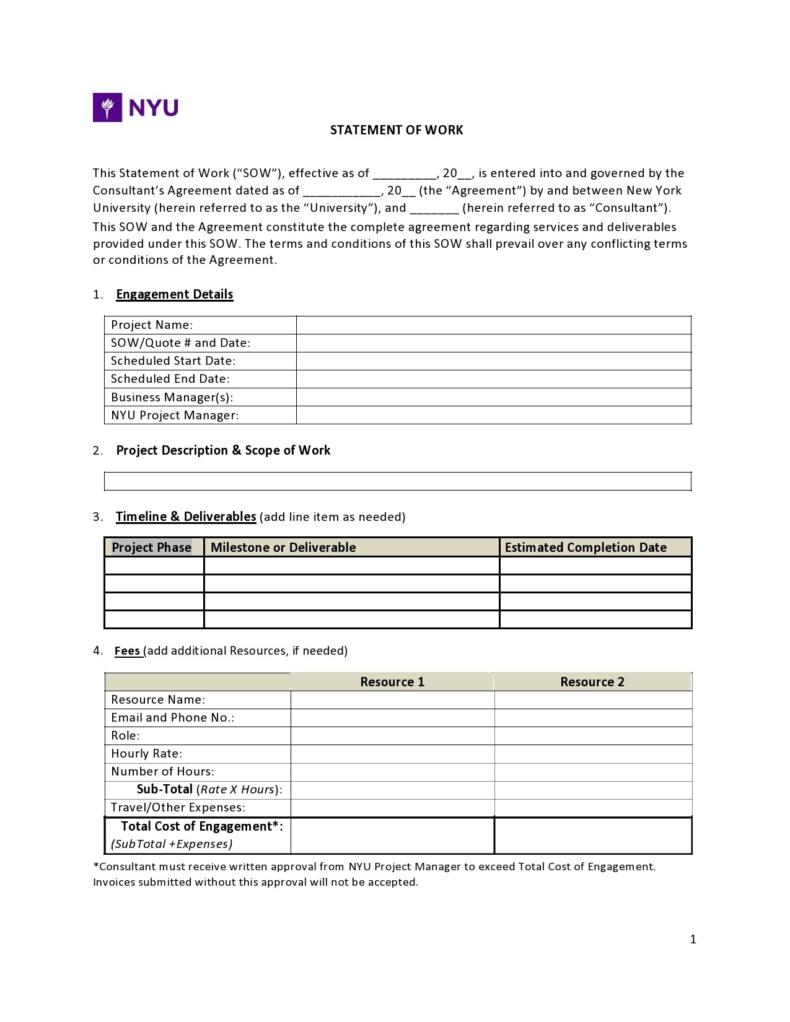The critical path method or CPM is a very important concept in project management. In order to carry out this method well, you should create a critical path template. Using a critical path method template, you can estimate the shortest possible duration for you to complete a project. Read more to learn about this template, the method, and more.
Table of Contents
Critical Path Templates
What is a critical path?
Critical path charts are an essential aspect of project management. It’s the responsibility of the project manager to manage all of the resources allocated to a specific project effectively. Creating a critical path template allows project managers to optimize all of the resources to minimize waste. This document also helps you determine the best way to deliver your project.
A critical path refers to the sequence of the tasks of a certain project. When you add these tasks together, you can determine how long you need to complete the project. Therefore, a critical path method template is where you would input the information about your CPM.
If any of the tasks on your critical path get delayed, the end date of the project will end up getting delayed too. Project managers use the template to analyze which of the tasks are the most important for the completion of the project in the shortest possible time. With it, you can also determine which tasks aren’t that critical.
An explanation of the critical path algorithm
At the very core, the critical path method is a type of algorithm you can use to make decisions. The algorithm takes the start time of a task, the duration, and the completion time. This helps you determine which tasks require the most attention as these are the “critical tasks.”
To help you understand this algorithm better, let’s have an example. Let’s assume that you have a list of tasks in your critical path chart. In the chart, you would have columns where you list the tasks you should accomplish first for the project to begin along with how long these tasks take to finish.
Any project manager aims to accomplish a project in the quickest possible time without compromising its quality. Therefore, you should find the shortest completion time for each of the tasks. The best way to do this is to organize all of the tasks into a critical path template in proper order.
You may also create a flow chart wherein you list the tasks in sequence and place arrows between them. Then indicate the earliest start time on the left of the task and the earliest finish time on the right. Whenever you start a task, indicate the actual start time underneath the earliest start time.
Then indicate the actual finish time under the earliest finish time before moving on to the next task. You may also want to indicate which tasks require the completion of the tasks before them before you can start doing them. This makes it easier for you to prioritize your actions.
Critical Path Method Templates
Using a critical path in project management
As aforementioned, a critical path template is very important in project management. With it, you can determine how long a project takes from start to finish. That way, you know how much time to allocate for the project. It’s a very effective and useful document which helps in decision-making too.
After you’ve created your critical path method template, you must also learn how to use it properly. You can either download a template or create your own critical path charts from scratch using the word processing software of your choice. To make it easier to visualize the proper use of such a template, let’s work with another example.
Here, let’s assume that you’re in charge of planning a party for your company. This is your current project so how do you plan and execute it? Here are some tips to guide you:
- Define the scope of the project
The first thing you need to do is define all of the tasks you need to finish to complete the whole project. Going back to our example, the tasks may include:
Choosing a venue and a date for the event.
Come up with a playlist.
Rent and set up the sound system.
Invite guests to the party.
Hire a caterer to provide food and drinks.
Host the party.
You may include other tasks as you see fit. The tasks you include depends on the needs of your project. - Identify and analyze the critical path
The basic concept behind the analysis of critical path is that you can only move on to certain tasks after you’ve finished the others. You must accomplish the tasks in the proper sequence so that each stage gets completed before you can start on the subsequent stage.
The critical path refers to the longest sequence of tasks from the beginning of the project to its completion. You must accomplish all of these tasks to ensure that you finish the whole project by a specific time. Therefore, you must manage each of the tasks closely, especially if you’re the project manager.
If any of the tasks in your critical path template aren’t completed on time, you should take action immediately to avoid any delay. Otherwise, you might not be able to finish your project at the time you have set. - Come up with various project paths
In a single project, you can have several critical paths and have them run concurrently. This is a result of multiple dependencies between the project tasks or separate sequences which run at the same time.
The critical path contains all of the activities and tasks associated with the project. This doesn’t necessarily mean that all of the tasks part of the critical path are the most relevant. There may also be tasks which you don’t include on your critical path but still, have a significant effect on the success of your project.
The bottom line is that the critical path method involves finding out which are the most critical tasks and activities you should accomplish on time. Of course, there may be other activities which aren’t part of your critical path but which are still very important thus, require your attention as well.
Tips for creating a critical path template in Excel
Microsoft Excel doesn’t have a feature which allows you to identify your project’s critical path. But with a little bit of customization, you can use this software to identify the critical path on your own for your small projects. Here are some tips to guide you:
- Create the precedence diagram
The precedence diagram provides you with the flow of all the project tasks and activities from the beginning all the way to the end. You need to create this flow on a separate sheet of paper to give you a structure for your critical path method template. - Prepare the spreadsheet in Excel
For the computations of your critical path, you have to create the main headings namely the “Activities List,” the “Duration of Activities,” and the “Possible Activity Paths.” Under the Activities List heading, enter the complete list of activities. Then input the duration of these activities under the Duration of Activities heading.
The next thing to do is to enter the identified paths under the Possible Activity Paths heading. For instance, if the first activity has several paths, make sure to indicate all of them. But input them in separate cells rather than combining all of these paths in a single cell. - Identify your project’s critical path
The critical path refers to the longest path you have in the precedence diagram you created. To compute the critical path, you must first calculate how long each of the individual paths will take to complete. You can do this using Excel’s SUMPRODUCT function.
There are two ways to identify or calculate the critical path. First, you can manually identify the longest path in your diagram. Second, you can make use of the MAX function in Excel to generate it automatically. When you have several paths, it’s better for you to do the latter.
It’s much more effective to automatically calculate the critical path when you have more than one. To do this, you must identify the longest path first using the MAX function. Then input a conditional IF statement. This compares the Path Duration value against the Longest Path value.
If you entered the formulas correctly and the software finds a match, the proper column should show the word “Critical” automatically. You can even use the conditional formatting feature of Excel to change the color of the critical cell. This makes it easier for you to spot it as soon as you open the file. - Create a Gantt chart
After the successful identification of the critical path, you can start doing different things with it. You can come up with a schedule for your project, think about strategies for risk response, and even create a Gantt chart to make a visual representation of your projects. You’ve finished the hard part so it’s time to start working!


























